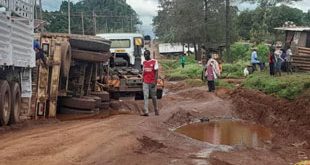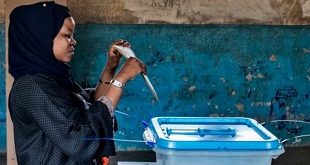Poverty and hunger persist, exacerbated by climate change
As of 2015, sub-Saharan Africa had the highest concentration of the world’s poor, with 41.3 percent of people living under the poverty line. An estimated 600 million people do not have access to electricity, and millions die every year from preventable diseases. Relentless population growth and climate change also present two major threats to continued economic progress.
Thirty-one African countries need food aid, and more than 30 percent of the 830 million people worldwide suffering from inadequate food supply are in Africa. The prevalence of undernourishment, in fact, increased from 234.6 million in 2016 to 256.1 million in 2018.
In addition, experts predict that a temperature change of two degrees Celsius could contribute to farmers losing 40 to 80 percent of cropland conducive to growing maize, millet, and sorghum by the 2030s-2040s.
Main obstacles to progress
Given the complexities caused by rapid population growth and climate change, African nations must attempt to achieve the SDGs with urgency, as many of the challenges will become harder to manage if left unattended.
Even with Africa’s enthusiasm, without a robust global and localized governance structure the SDG agenda will falter
One major reason to be hopeful for Africa’s progress is that the SDGs are in direct alignment with the African Union’s Agenda 2063—the continent’s long-term social and economic transformational blueprint for a prosperous continent.
In fact, the two ambitious agendas align on over 85 percent of their goals, and African countries have shown enormous enthusiasm and endeavors in implementing the SDGs, with 90 percent of countries mainstreaming the SDGs into their national development plans.
At the same time, many weak links in the SDGs—largely due to the lack of a global governance structure—are waiting to be addressed. Despite data innovations embedded in the SDG formulation, the data gap remains wide and manifests into poor planning and, consequently, poor decision making and results. There is neither a defined reporting nor accountability mechanism, nor clarity on pathways and interventions, and little experience or scalable practice when it comes to social inclusiveness. Not much has been done in changing mindsets; we are continuing to do new things the old way. Like in decades past, key stakeholders continue to work in silos, duplicating interventions with little coordination. Finally, the world only agreed on goals and targets, leaving solutions to be developed locally.
State fragility and large financing gaps hinder progress
The continent is disadvantaged with a low starting point. Fragility—which manifests in many forms such as weak institutions and economic, political, and social insecurity—remains prevalent in parts of the region, with 80 percent of the world’s fragile states found in Africa. Despite being one of the fastest-growing regions in recent decades, 40 percent of African countries are still classified as “low income,” with a GNI per capita of below $1,025 per year.
Financing continues to be a constraint as well. The financing gap for SDGs is large for low-income countries, estimated to be, on average, in excess of 14 percent of GDP. Alone, sub-Saharan Africa’s annual additional spending requirements are estimated at 24 percent of the continent’s GDP, approximately $420 billion. This financing gap is a sizeable challenge for many Africa countries given that, as of 2018,over 20 of the 54 African countries are either in or at a high risk of debt distress. Compounding this challenge, official development assistance, though rising overall, is declining in per capita terms, and foreign direct investment has been dwindling in recent years. Furthermore, while more than a third of the required financing for the SDGs was expected to come from the private sector, the actual contributions from the private sector so far are significantly smaller, at only 4 to 8 percent.
Looking ahead: The time for action is now
Going forward, leaders at all levels must tackle the SDGs head-on with a comprehensive and interconnected approach to effectively optimize resources. Since such an approach seeks high-level horizontal and vertical coordination, it requires persistent and logically framed action plans for ensuring synergies. The domestication process must thus go beyond just mainstreaming the SDGs into national plans; it must now strive to contextualize both the target and its indicators to local socio-economic realities. Our strategy must be changed from the conventional present-to-future to future to-present planning, cascading from 2030 backward.
Firmly determined to take its future into its own hands, Africa is growing out of adopting agendas to, instead, setting the agenda. Agenda 2063 is one mechanism for doing so. So is the African Continental Free Trade Area, which will integrate a market of 1.2 billion people with a GDP of over $3.4 trillion, creating new opportunities for Africa and its business partners. In addition, many African countries are embarking on ambitious development plans that are driving the adoption of technologies and new sources of energy. Countries are also showing a greater appetite for information technology and knowledge. While Africa should remain committed to working with its development partners over the next decade and beyond, achieving the SDGs should primarily be its own responsibility.
****
Belay Begashaw is Director General – The Sustainable Development Goals Center for Africa
 The Independent Uganda: You get the Truth we Pay the Price
The Independent Uganda: You get the Truth we Pay the Price


